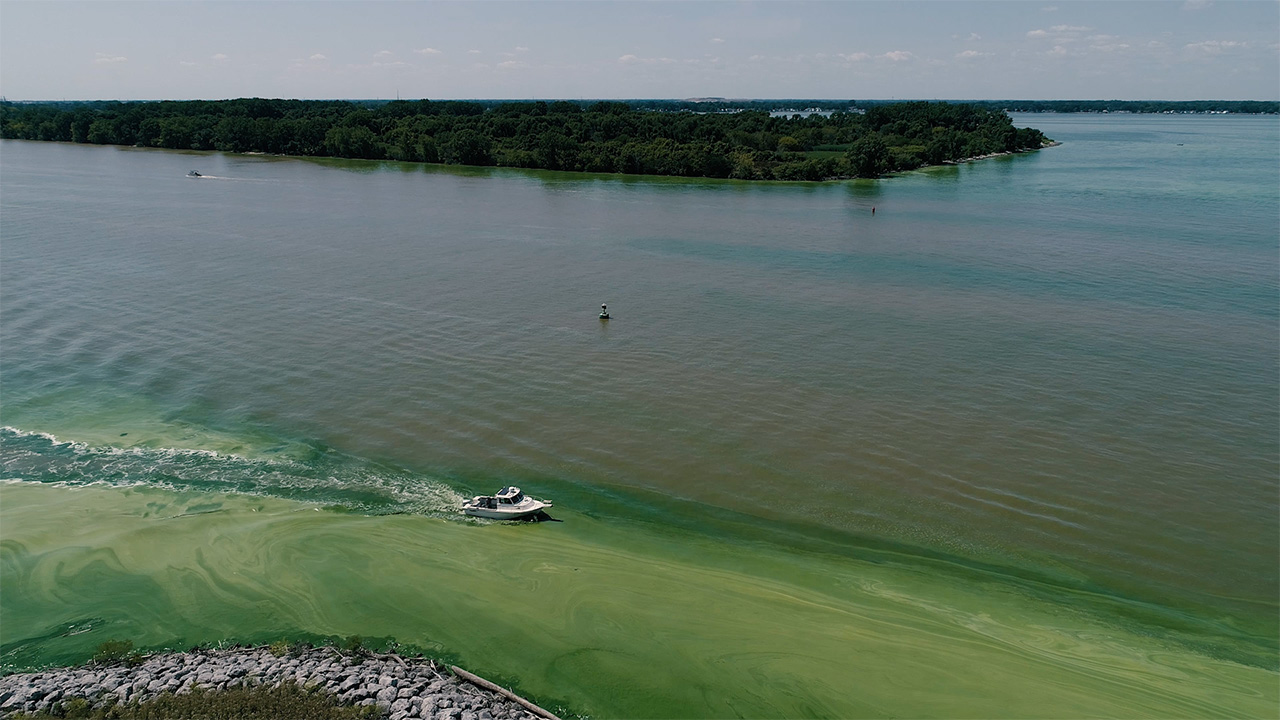
By Lester Graham, Michigan Radio
The Great Lakes News Collaborative includes Bridge Michigan; Circle of Blue; Great Lakes Now at Detroit Public Television; and Michigan Radio, Michigan’s NPR News Leader; who work together to bring audiences news and information about the impact of climate change, pollution, and aging infrastructure on the Great Lakes and drinking water. This independent journalism is supported by the Charles Stewart Mott Foundation. Find all the work HERE.
New research finds the annual dead zone in Lake Erie is getting a boost that makes it worse very quickly.
That dead zone begins with nutrients, phosphorus, from agricultural runoff and other sources carried by rivers to the lake. Phosphorus fertilizes algae. The plants grow fast, then die and rot. The decomposition process robs the water of oxygen.
It’s been known that when the oxygen is gone, it triggers a release of natural phosphorus from the sediment at the lake’s bottom, expanding the dead zone. That phosphorus comes from the microscopic plants and organisms decaying on the bottom of the lake.
The Director of the University of Michigan’s Cooperative Institute for Great Lakes Research, Thomas Johengen, says what was not known is how fast that begins.
“So we utilized some fairly newer technology that could make continuous nutrient measurements in situ, sort of a laboratory in a can,” said Johengen.
The researchers put some of those “labs in a can” on the bottom of Lake Erie’s central basin. What they found was surprising.
“As soon as the oxygen essentially went to zero, we would start to see that release,” Johengen said, explaining it happened within 12 to 24 hours.
So the dead zone is amplified by the naturally occurring nutrients at the bottom of the lake and those nutrients speed things up.
“An important point we try to make is that that phosphorus that’s coming from the sediment, it’s in a form that’s immediately biologically available,” Johengen explained.
The phosphorus being introduced by the rivers is bound up in soil particles. Only about 20% of the phosphorus is immediately available. Ninety percent of the phosphorus on the bottom of the lake is immediately available when the oxygen is depleted.
The research by lead author Hanna Anderson, Casey Godwin, and Johengen, was published online by the journal Environmental Science and Technology Water.
Catch more news on Great Lakes Now:
Mussel-Phosphorus Puzzle: Invasive mussels are reshaping the chemistry of the Great Lakes
Too few farmers are curbing pollution in Lake Erie. Should they be forced?
Road Salt: Researchers look at vegetables and juices for alternatives to salt
API key not valid. Please pass a valid API key.Featured image: Harmful algal bloom in western Lake Erie (Great Lakes Now Episode 1013)




